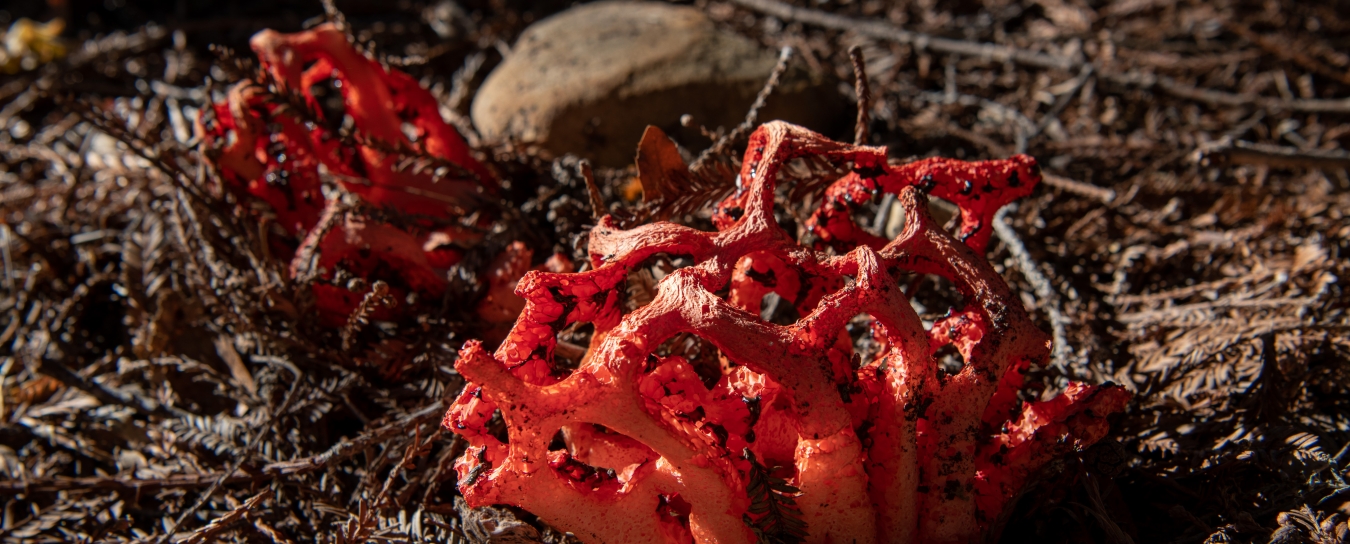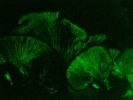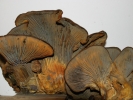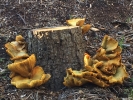
Fungi
Our fungi identifications are courtesy of fungi expert Bob Cummings, who teaches in the Botany Department at Santa Barbara City College in the Biological Sciences. Before you ask, check to see if your fungus has been identified below.
- Anthropology
- Rocks & Fossils
- Invertebrates
- Vertebrates
- Botany
- Astronomy
- Fungi
- General
- Recently Asked
Fairy Tub
In a recent Instagram post, there was a picture of a Fairy Tub that was submitted. Do they glow in the dark? Do they glow under UV light? Do you know where I can find mushrooms/fungi that glow in the dark?
I find that things that glow in the dark fascinating. I grew up on the west coast and have not stayed on the east coast to see a firefly. It is on my bucket list.
Thank you for considering the question.
Ty
Curator Response
Whenever we have a question that requires a fungi expert, we ask Bob Cummings, Ph.D., who teaches in the Botany Department at Santa Barbara City College in the Biological Sciences. Here's what he had to say:
"The 'fairy tub' Peziza vesiculosa doesn't bioluminesce. None of the fungi in the ascomycota or 'sac fungi' group produce bioluminescence. There are only about 100 species of fungi that bioluminesce. All are basidiomycetes, a.k.a. 'club fungi,' the group that contains the true mushrooms.
These species are spread among only three genetic lineages: the Armillaria lineage (e.g., honey mushrooms), the Mycena lineage, and the Omphalotus lineage (e.g., Jack-o-lantern mushroom, a.k.a. false chanterelle).
Your timing to see bioluminescence couldn't be better, since the Jack-o-lanterns (Omphalotus olivascens) are just now starting to appear, growing saprotrophically (feeding on dead organic matter) on old tree stumps around Santa Barbara. They are quite common here during the rainy months. The gills of these mushrooms bioluminesce at a wavelength of about 520 nm (green light).
Interestingly, the tissues that bioluminesce vary among the various species of bioluminescent fungi. In some species it is the caps that bioluminesce, in other species it might be just the gills, or just the stipe, or the mycelium. The bioluminescence occurs 24/7 in young, fresh specimens.
To see good bioluminescence with Jack-o-lantern mushrooms (remember, young and very fresh, because older specimens lose their ability to bioluminesce quite quickly), the collected mushrooms must be taken into a very dark room, like a closet. You will need to wait at least two or three minutes in the dark to let your eyes become accustomed to the dark so they are receptive to the rather weak bioluminescence.
To take the attached photo (about 15 years ago!) I set the mushrooms up in a room that had no access to any light, pitch black, and set my camera on a tripod (since I needed to take a long exposure). I set the camera at the highest ASA possible to be able to gather maximum light. (ASA is like ISO: a measurement of sensitivity to light.) And even though my eyes could see the bioluminescence very clearly after a few minutes, the camera still needed a very long exposure to capture it, I think I remember at least one or two minutes, but maybe even longer.
Bioluminescence, across the phyla of bioluminescent fungi, bacteria, insects and other invertebrates, occurs by the same basic mechanism; a reduced luciferin (the compound varies among phyla, but in all fungi studied seems to be 3-hydroxy hispidin), is oxidized by a luciferase enzyme, and usually with an input of ATP. Excess energy from the reaction is shed as light.
Why do mushrooms bioluminesce? Turns out that all the bioluminescent species known are white-rot fungi which break down wood by producing strong oxidants to attack the lignin in the cell walls. Hispidin (a substance in the luciferin) is a strong antioxidant, and may provide a benefit by protecting the fungus from its own destructive chemical warfare compounds.
The reasons bacteria, insects and invertebrates bioluminesce are likely completely different (such as perhaps attracting mates in fireflies, warding off predators in marine worms, etc.?). In science, we know a lot about the who, what, where and how of things...but we're still 'in the dark' about the 'why' of things. But keep asking that question!"



Tyrena response:
That is so "enlightening" (pun intended) Thank you for the info. I have seen fungi like that around campus. I will try to catch a glimpse soon or after a rain(?).


